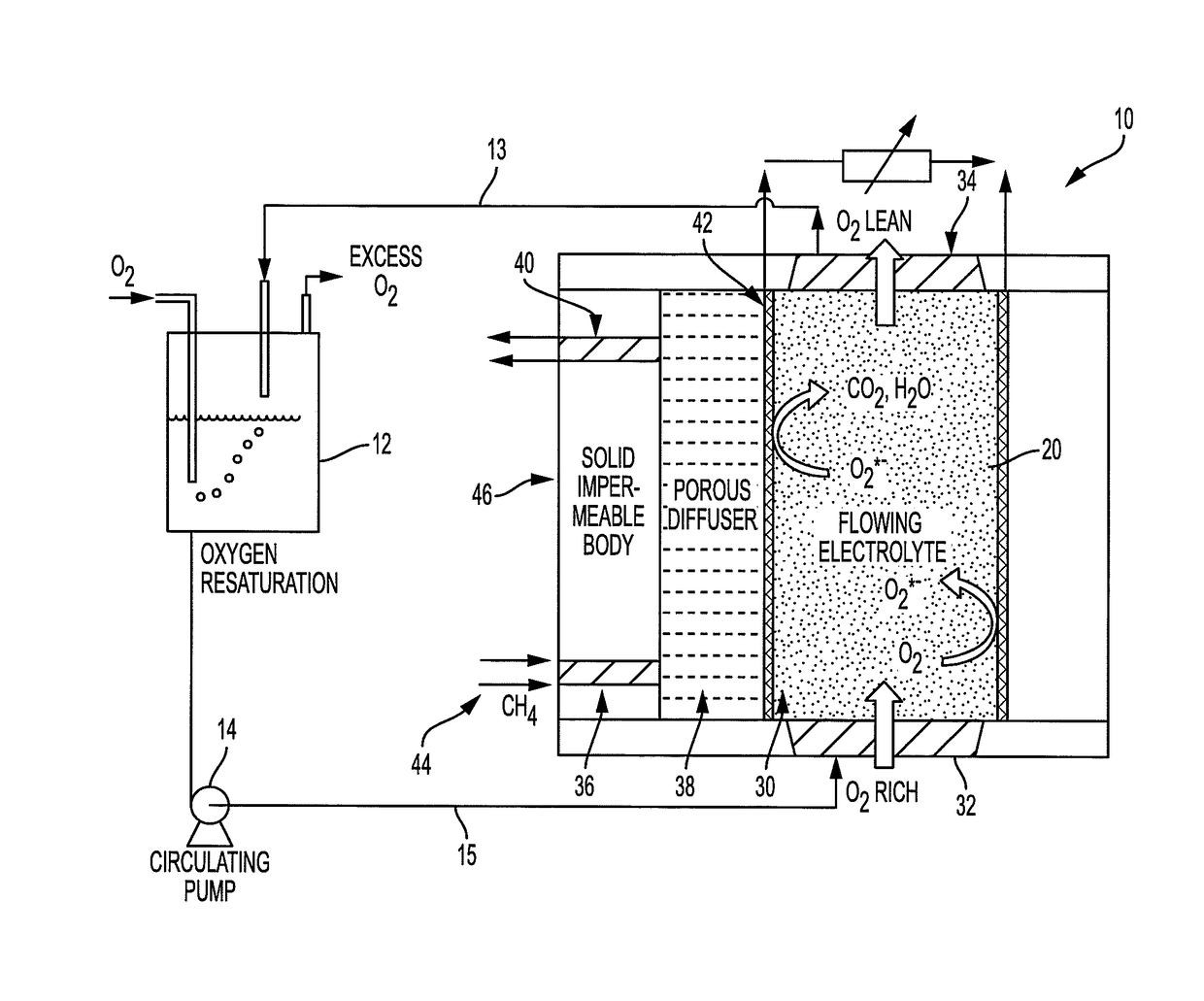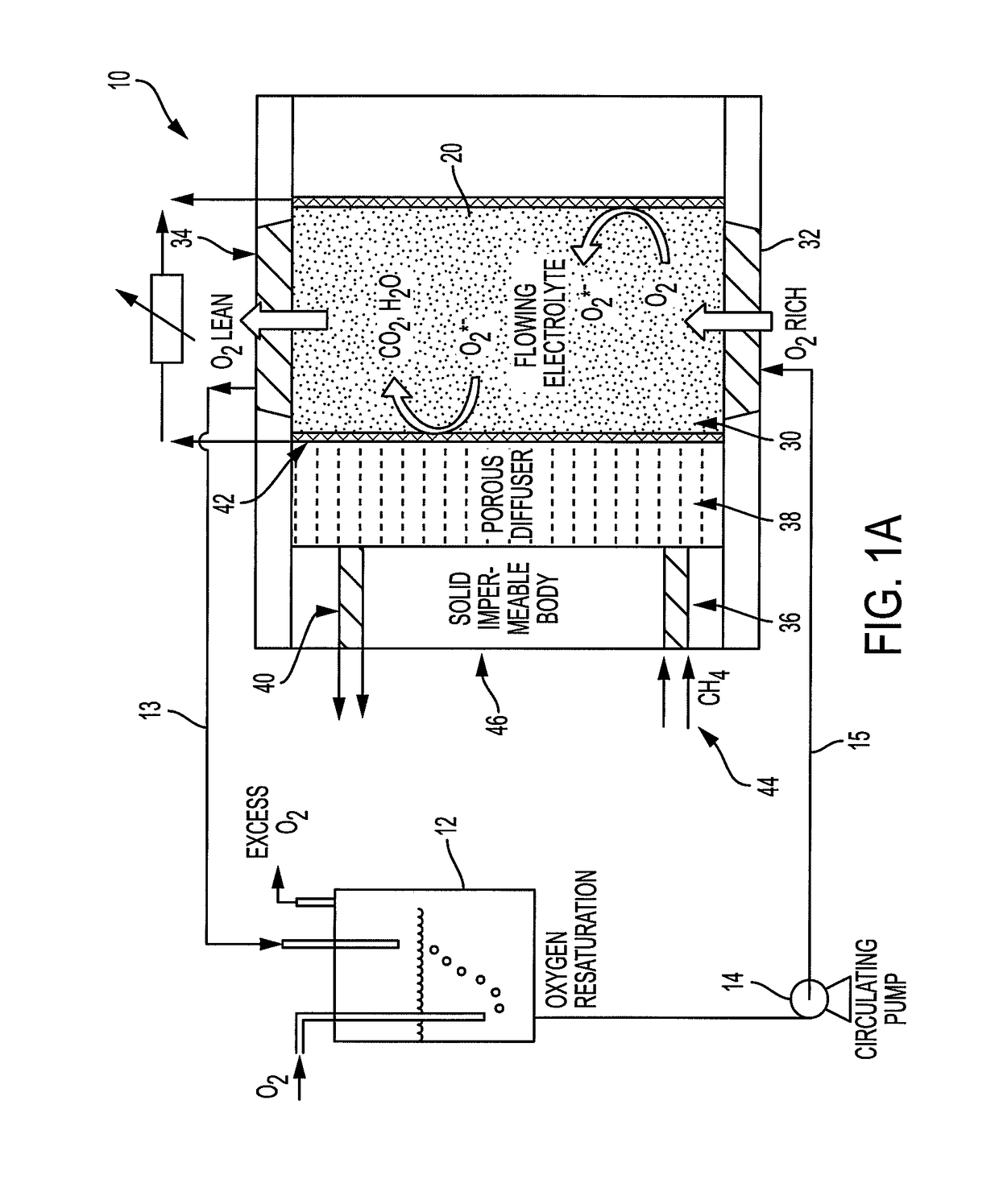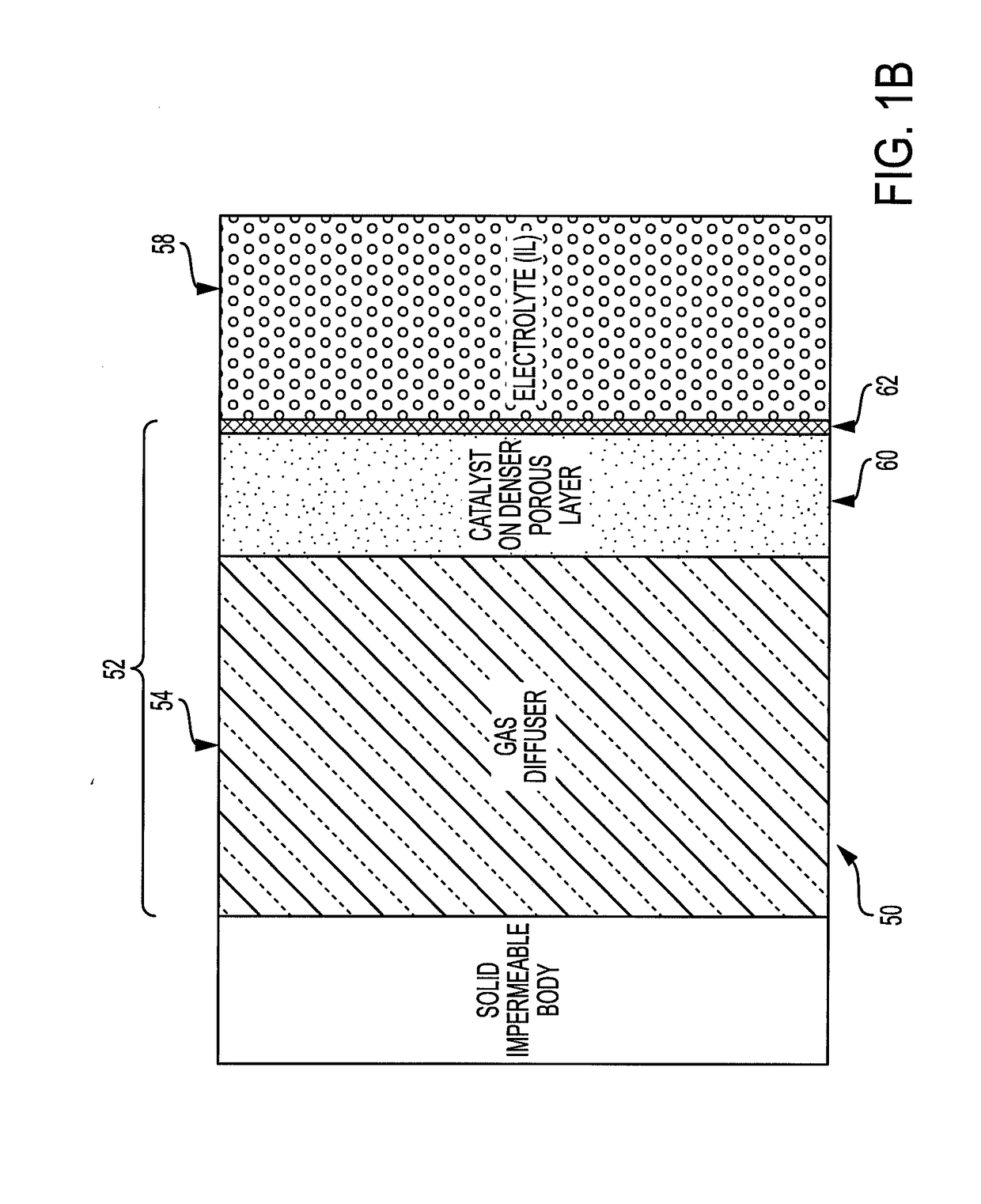Flowing electrolyte fuel cell with improved performance and stability
a fuel cell and flow electrolyte technology, applied in the direction of indirect fuel cells, cell components, electrolyte stream management, etc., can solve the problems of limited ionic active species transport rate, adverse effects on the performance characteristics of intermediate temperature dhcfcs based on previous designs, and significant challenges in finding appropriate materials to work in these conditions. , to achieve the effect of maximizing voltage delivering capability and maximizing current delivering capability
- Summary
- Abstract
- Description
- Claims
- Application Information
AI Technical Summary
Benefits of technology
Problems solved by technology
Method used
Image
Examples
Embodiment Construction
[0053]According to the presently described embodiments, the use of convection / electrolyte flow helps eliminate concentrations gradients and further enhances the diffusional current in contemplated systems. Also, according to the presently described embodiments, improving the use of an oxygen-saturated electrolyte results in improved performance (specific power and energy) and energy efficiency of such systems.
[0054]For example, according to the presently described embodiments, an improved electrochemical fuel cell system is provided by use of flowing electrolyte to maximize fuel cell performance. In at least one form, the flowing electrolyte is first saturated with oxidant (oxygen) either in the molecular (O2) form or in the ionic (oxygen ion such as superoxide, peroxide, oxide) form prior to flowing the electrolyte along the fuel-membrane support interface. In another form, the system uses a dual-porosity structure implementing a gas diffuser / catalyst layer to allow the use of gase...
PUM
| Property | Measurement | Unit |
|---|---|---|
| diameters | aaaaa | aaaaa |
| thickness | aaaaa | aaaaa |
| diameters | aaaaa | aaaaa |
Abstract
Description
Claims
Application Information
 Login to View More
Login to View More - R&D
- Intellectual Property
- Life Sciences
- Materials
- Tech Scout
- Unparalleled Data Quality
- Higher Quality Content
- 60% Fewer Hallucinations
Browse by: Latest US Patents, China's latest patents, Technical Efficacy Thesaurus, Application Domain, Technology Topic, Popular Technical Reports.
© 2025 PatSnap. All rights reserved.Legal|Privacy policy|Modern Slavery Act Transparency Statement|Sitemap|About US| Contact US: help@patsnap.com



